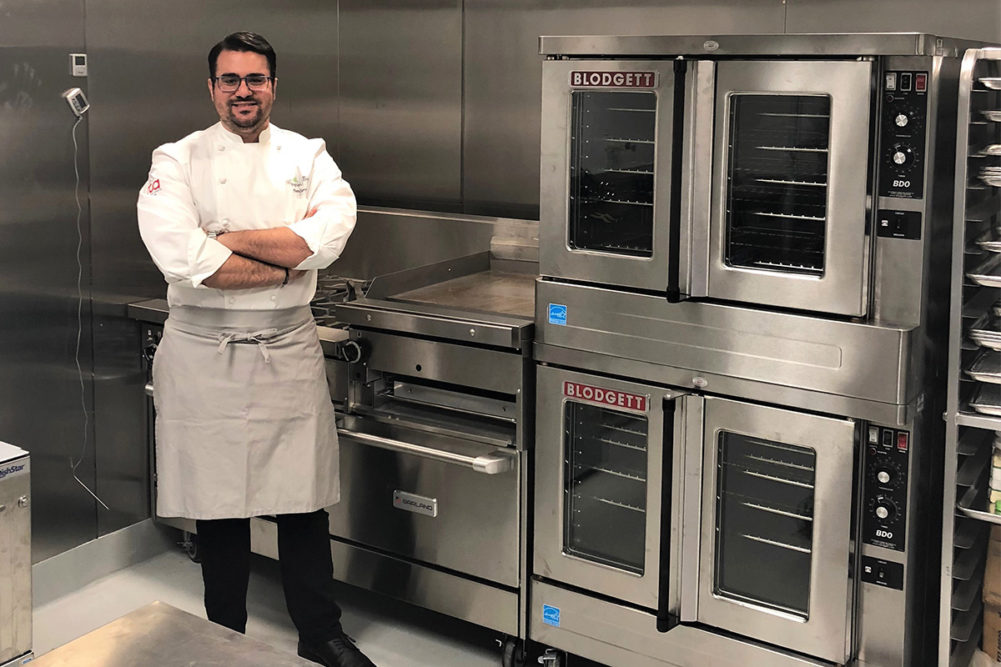WESTCHESTER, ILL. — Chefs, entrepreneurs and others in the culinary and food formulation fields may find themselves working at home during the coronavirus (COVID-19) pandemic. A home kitchen may have become a substitute for a laboratory/test kitchen at a company facility.
Chef Nelson Serrano-Bahri, innovation and culinology manager, Emerging Business for Ingredion, Inc., in a May 7 Zoom meeting gave details on what kitchen items may assist these innovative efforts at home. High-powered mixers, stainless-steel bowls, thick power cords and color-coded towels all may prove useful.
Westchester-based Ingredion teamed up with The Hatchery Chicago, a non-profit food and beverage incubator based in Chicago, to put together the Zoom meeting.
“By working together with our customers and partners like The Hatchery Chicago throughout this challenging time, we continue to share best practices that focus on the needs of entrepreneurs,” said Evan Hyman, senior director of Ingredion’s Emerging Business team. “This interactive session with chef Nelson grew out of the types of questions that we often receive from entrepreneurs on how to scale up, but we adapted it to an ‘at-home’ version from Nelson’s kitchen.”
The Hatchery Chicago supports food and beverage entrepreneurs.
"At times like these, innovation does not stop; it accelerates,” said Natalie Shmulik, chief executive officer of The Hatchery Chicago. “We recognize that budding entrepreneurs and emerging brands do not want to lose momentum. Following shelter in place, The Hatchery immediately pivoted to a virtual curriculum in order to continue providing resources, inspirations and support to entrepreneurs.”
Mr. Serrano-Bahri hosted the Zoom meeting in his home kitchen. He gave advice on the following items:
Mixers: A mixer with a larger motor, like 600 watts, provides more capacity and more flexibility. Paddle attachments help when chefs are mixing ingredients like spices and cookie dough. The chef does not have to stop the machine and scrape the bottom.
Food processors: A commercial-grade food processor works better than a blender when working with certain ingredients like dough, crushed nuts and dried fruit. Purees are examples of products where using a food processor makes more sense.
Blenders: Blenders create a thicker emulsion for products like vinaigrettes.
Power cords: Mr. Serrano-Bahri recommends water-resistant power cords that normally are used for outside activities. They are thicker and less of a fire hazard. He does not use power strips because they may overheat.
Bowls: Mr. Serrano-Bahri prefers stainless-steel bowls because they are sturdier and less likely to break if they fall. Plastic bowls tend to be more reactive to acids. Weighing bowls and writing the weight on the bottom of the bowl will help when weighing ingredients like dough.
Spatulas: Mr. Serrano-Bahri prefers rubber spatulas. Wooden spatulas can break or chip, and they should not be placed in the dishwasher.
Scales: Using a scale early in the process is key. People working from home do not have to spend a lot of money, perhaps $40, on a scale found at retail. Working with certain ingredients that need more precise measurements may require a more expensive scale. He gave the example of high-intensity sweeteners such as stevia. Sometimes less than a gram of a high-intensity sweetener is needed in an application.
Towels: Cotton towels are versatile. They may be used to take items out of the oven. A damp cotton towel creates friction when placed under a cutting board, which keeps the cutting board from scooting around. Polyester microfilm towels absorb a lot of moisture and are good for sanitation. They should not be exposed to high heat because they might melt. Color-coding towels helps to contain cross-contamination.
Sanitation: Mr. Serrano-Bahri combines one-third a cup of bleach with a gallon of water for a sanitation solution. Bleach is reactive and should not be mixed with degreasers, which may create fumes. Write down how each spray bottle is used and what it has in it, like bleach solution, disinfectant or plain water.
Cell phones: Notes may be taken on cell phones. “Siri can do anything,” Mr. Serrano-Bahri said. “Tell Siri to take notes.” Apps on cell phones may convert units, like converting oz to grams. Cell phones have calculators and stop watches, too. Chefs writing notes on paper should take photos of the notes in case the paper is destroyed or lost.
Mr. Serrano-Bahri received a bachelor’s degree in culinary arts and nutrition from Johnson & Wales University. He previously worked for Unilever and Nestle USA and has served on the board of directors for the Research Chefs Council.
“Natalie and her team do a fantastic job managing The Hatchery in Chicago,” he said. “They are a tremendous resource for the food entrepreneurship ecosystem and wonderful advocates for small businesses everywhere.”






